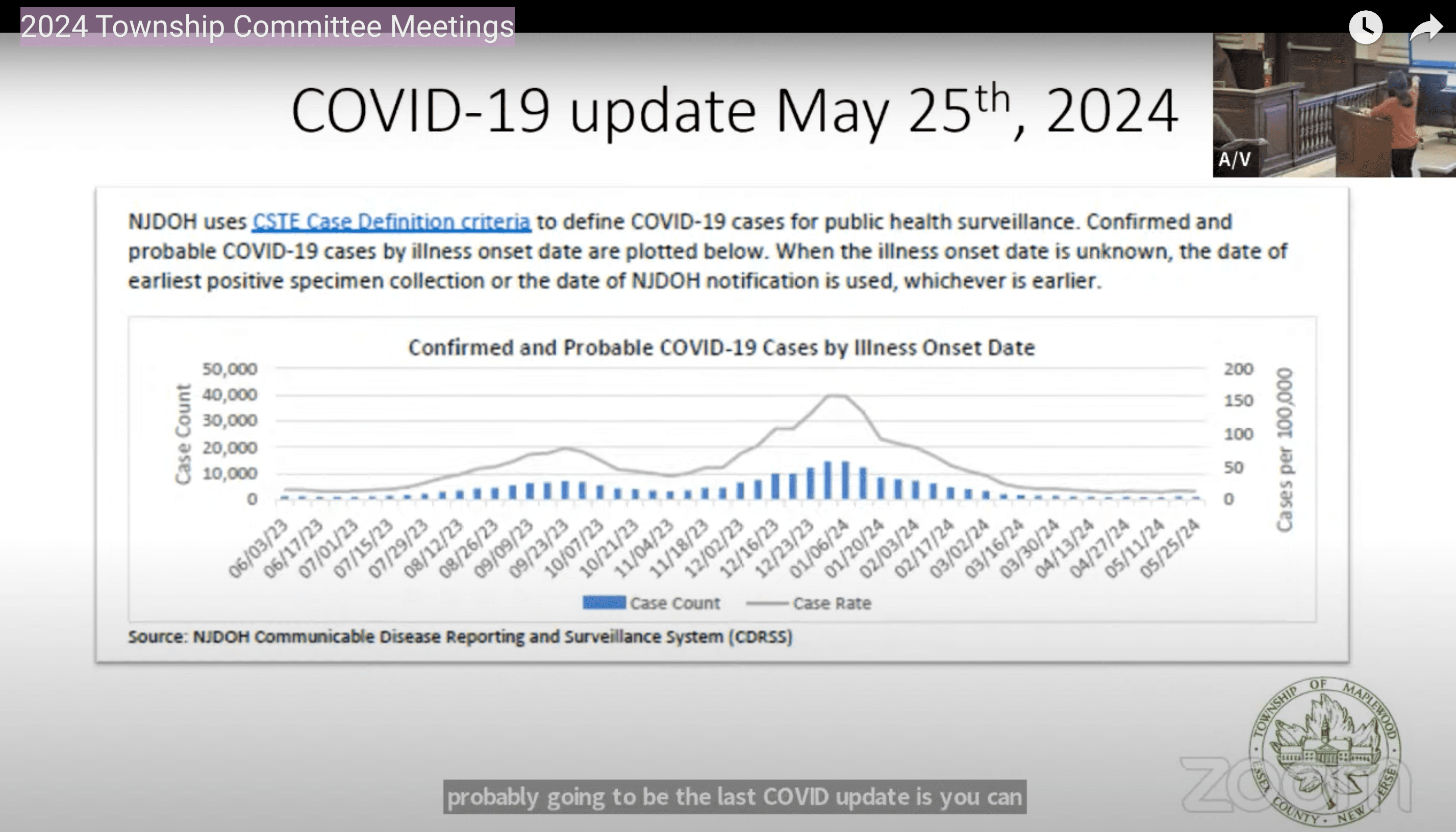Although New Jersey is a long way from the lockdowns and isolations of 2020 and 2021 and the viral spikes of 2022 and ’23, COVID-19 continues its seasonal surges, prompting local health officials to make free tests available.
On August 23, the Maplewood Health Department posted on social media: “We officially have more free COVID-19 Antigen Home tests at Maplewood Town Hall (574 Valley Street). We are open Monday-Friday 9 a.m. to 4:30 p.m.”
In response to a question on the post, the health department indicated that it is working to host a COVID vaccination event when the “new shot” — the latest COVID-19 vaccine — is available.
In May, South Orange-Maplewood Health Officer Candice Davenport noted that the virus was moving into an endemic rather than pandemic phase: “This will be our last COVID-19 update since we are moving away from the pandemic and moving onto the post pandemic,” reported Davenport. “We just want to highlight that the reason why this is going to be the last
COVID update is because you can see the numbers are really low.”

COVID data chart presented at the May 2024 Maplewood BOH meeting.
Davenport’s subsequent Board of Health presentations to South Orange and Maplewood have not included COVID-19 metrics, through to the most recent August 7 Maplewood Board of Health update.
This does not mean that the townships are not monitoring health trends, but that the local health department is directing resources where most needed. Davenport has noted that nurses are monitoring “reportable diseases” but the numbers have been extremely low and have not been broken out by disease in presentations. Recent Board of Health updates have included information on the flu, measles, health screenings, social workers, infant health care, dog bites, tips for coexisting with black bears, and more.
Meanwhile, the Centers for Disease Control has noted that COVID will continue to see seasonal surges — albeit with far less dramatic peaks than in the past and with less dire consequences.
According to statnews.com:
The latest CDC wastewater numbers rate viral activity as “high” in July, though still far below a steeper uptick in January of this year that is in turn dwarfed by a giant peak in January 2022, when Omicron first ruled.
This summertime surge — “surge” is relative, compared to past spikes of the virus — is, in many ways, entirely predictable. While experts debate just how far along SARS-2 is in its anticipated journey to seasonality, it has reared its head to varying extents each of the five summers it’s been around, going back to 2020 (though which month it’s peaked has varied over the years).
NorthJersey.com recently reported, “[S]erious cases remain low in the state despite the increase in transmission. The number of COVID patients on ventilators has barely risen out of the single digits each day for much of the summer,” and noted that, although summer transmission numbers are on the rise, “The numbers in New Jersey and nationally are still far below the annual peak in late December and early January each year, when transmission is greatest due to holiday travel and more time spent indoors together.”

